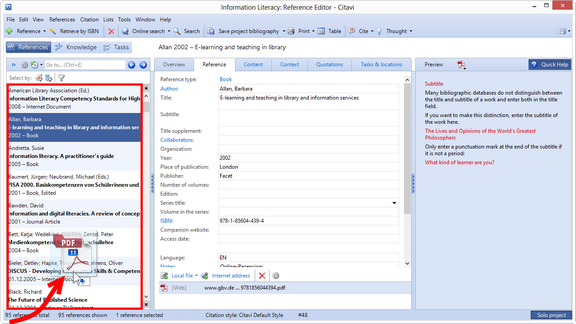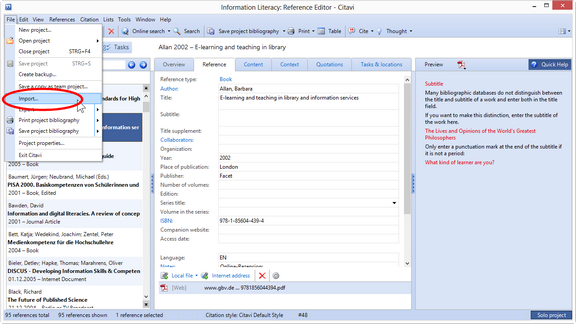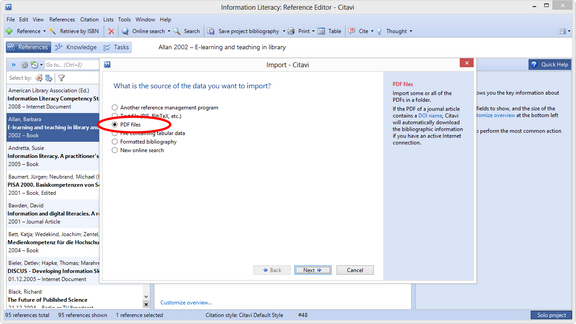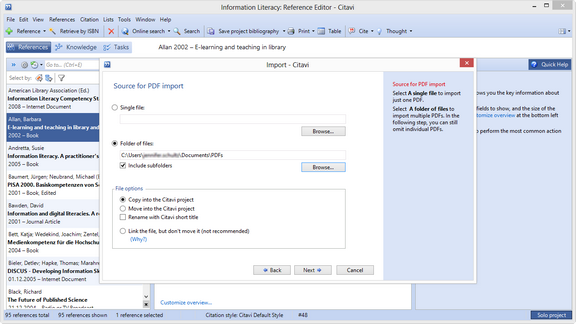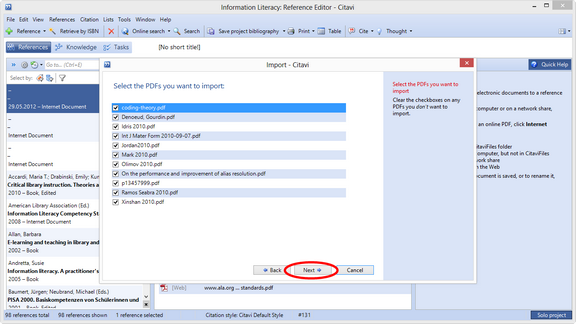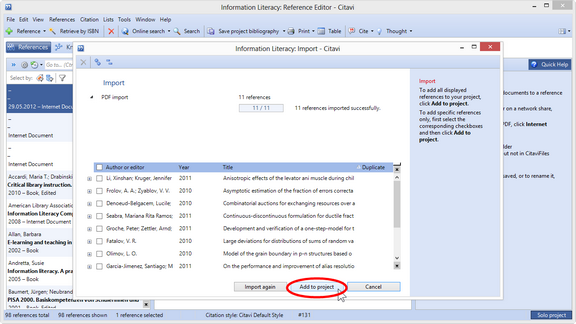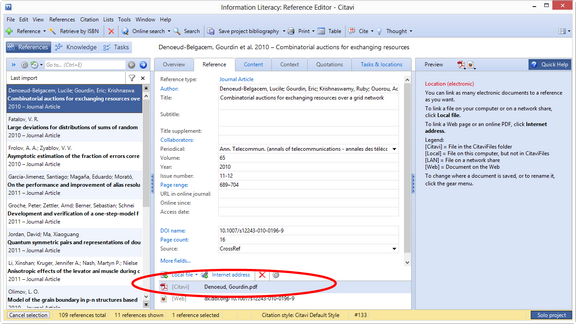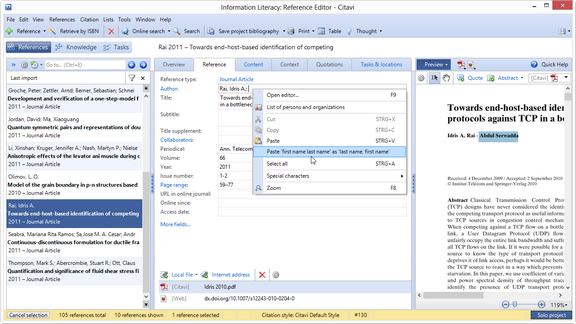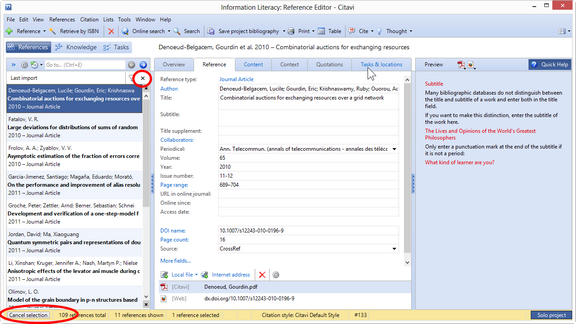Importing PDF Files
You can import PDFs of scholarly articles directly into Citavi. For each PDF, Citavi creates a new reference and searches for its bibliographic information on www.crossref.org.
If the article is not available on Crossref, Citavi will try to extract the bibliographic information from the metadata in the PDF. Since metadata is often incomplete, you should always double-check the bibliographic information and make changes if necessary.
Select Folder of files. Include subfolders if you want PDFs in subfolders to be imported as well. Click Browse, select the folder, and click Next. |
Citavi searches for the bibliographic information for each PDF file. Click Add to project, to add all the references to the current Citavi project. To only add certain references, select their checkboxes and click Add to project. |
As a default Citavi creates a copy of each imported PDF file and saves it in the folder \Citavi 4\[Project name]\CitaviFiles. How do you know where a file is located?: [Citavi] stands for the CitaviFiles folder, [Local] is another folder on your computer, [LAN] is a network drive and [Web] means that the file can be found online. |
If the PDF file does not have a DOI name or PubMed ID, Citavi adds the information from the PDF's properties. Unfortunately, this information is often incomplete. Open the PDF file in the preview and copy the missing information. The example shows how you can easily copy author names. |
